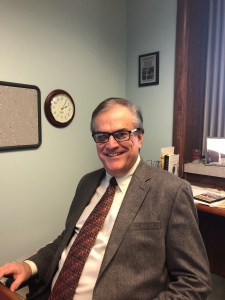
By the time I was hired to investigate Carnegie Medal nominees, I’d been writing about them for more than 17 years.
That stretch of Carnegie Hero reporting began shortly after I was hired in 2000 by the Associated Press, after spending the previous 12 years reporting for newspapers.
“What’s a Carnegie Hero?” I recall asking the first time the story was assigned to me.
I learned from the press release the essentials of the award. Then, as I’d write the AP stories and compile the accompanying list of winners with each, I came to understand what makes a Carnegie Hero and how Carnegie Heroes differed from other heroes I’d covered.
I learned that Carnegie Heroes must risk — or, in some cases, lose — their own lives to save someone from a life-threatening situation. But I didn’t fully appreciate that simple humanitarian calculus until I was hired as a case investigator in November 2017.
My first case was, by Commission standards, fairly straightforward: A fellow crashed his car into a wooded embankment early one Saturday morning. Another motorist saw the burning wreckage, ran to the vehicle, and pulled the driver – all 6 feet, 2 inches and 300 pounds of him – through the driver’s window opening moments before the car was fully engulfed in flames.
I learned, among other things, that my first nominee wouldn’t have necessarily been eligible for a Carnegie Medal had he simply been able to open the burning vehicle’s door and pulled the driver to safety. Rather, the nominee in my case had to go further, putting his life truly on the line by extending his upper body into the burning car because the doors were jammed shut. The nominee then lifted and pulled a much larger, and much younger, man to safety.
I also learned the attention to detail that goes into investigating the actions of a Carnegie Medal nominee.
That case involved a man who claimed he was briefly enveloped by flames when the front tire of the burning vehicle burst because of the fire. I’d never seen a car burn to that extent in person, and realized I’d have to confirm whether such a thing occurs – or is even physically possible – during a vehicle fire.
Thanks to YouTube, I was able to find video of a car fire where a burning tire did just what he said this tire had done. I was also able to track down a forensic vehicle fire expert who explained the physics behind this phenomena – one of several steps I had to take to ensure this story of heroism wasn’t embellished or simply misunderstood in a rush of adrenalin.
I was reminded of the seriousness of Mr. Carnegie’s mission, which I and the rest of the Hero Fund carry forward, more than 114 years later, by my second case investigation. It involved two police officers who helped a woman escape a house fire.
Both officers responded and were commended for heroism by their police department. But only one officer entered the smoke-filled bedroom where the victim was trapped, after first taking a gulp of fresh air, and emerged with the woman in his arms a short time later. And, so, only one nomination went forward for investigation under our rigorous standards.
Those distinctions aren’t spelled out in the press releases we issue and, as a result, that part of the story – the painstaking attention to detail and our rigorous award standards – sometimes escapes the public’s eye.
It doesn’t escape mine any longer.
— Joe Mandak, case investigator
Return to imPULSE index.
See PDF of this issue.

